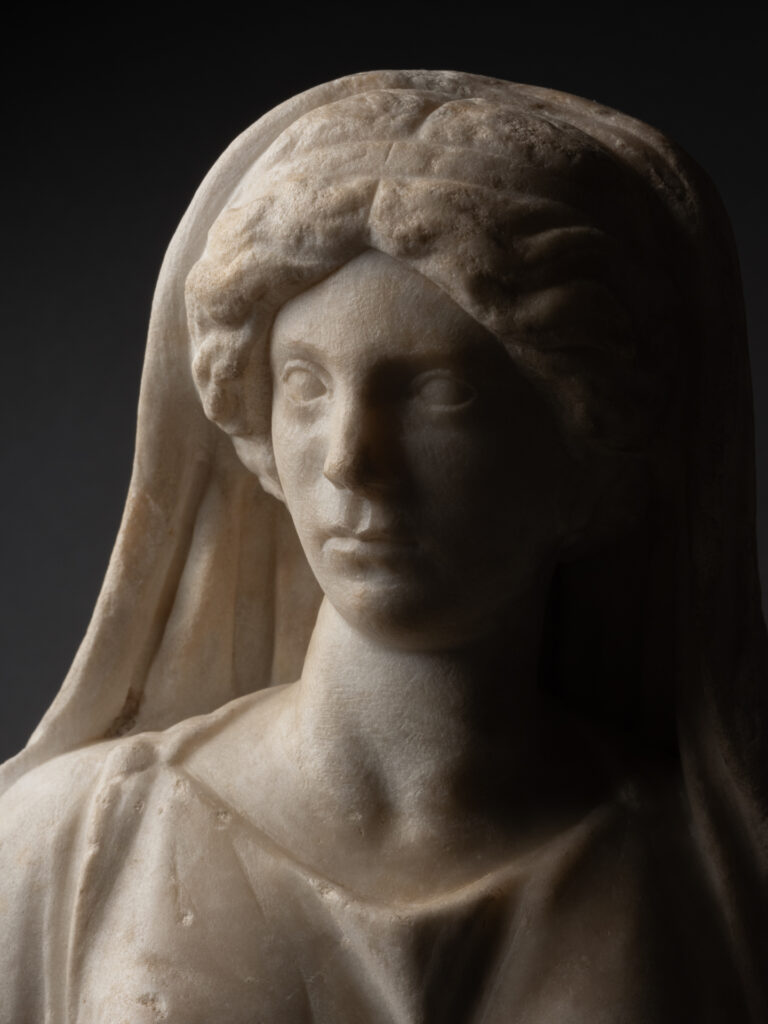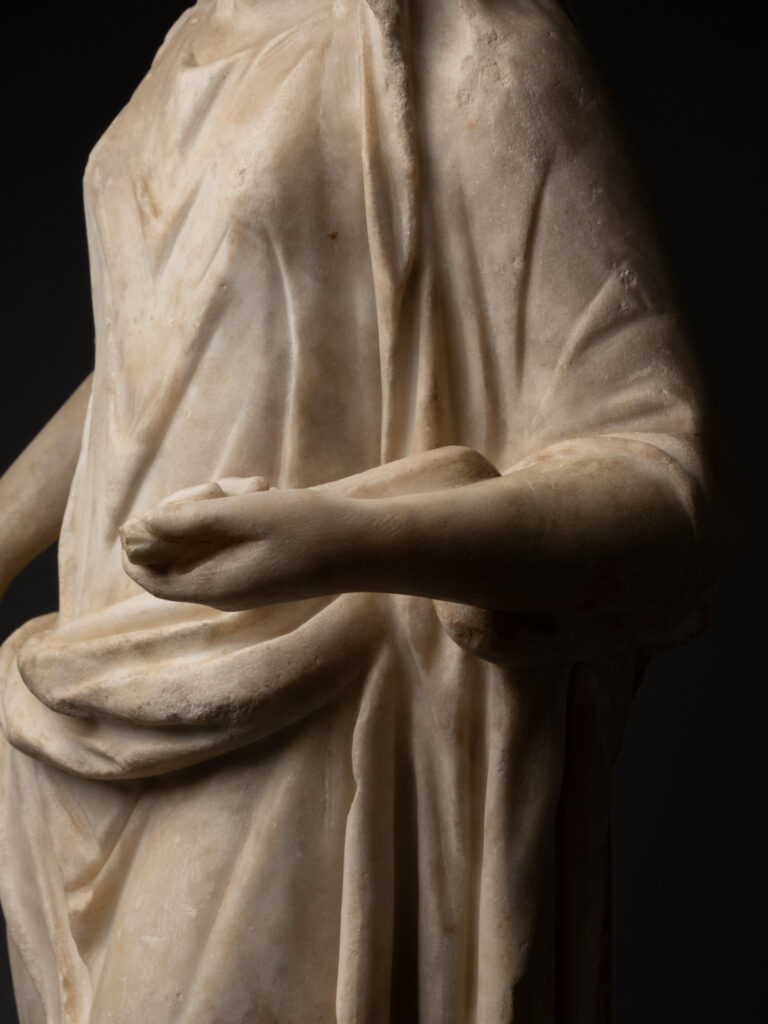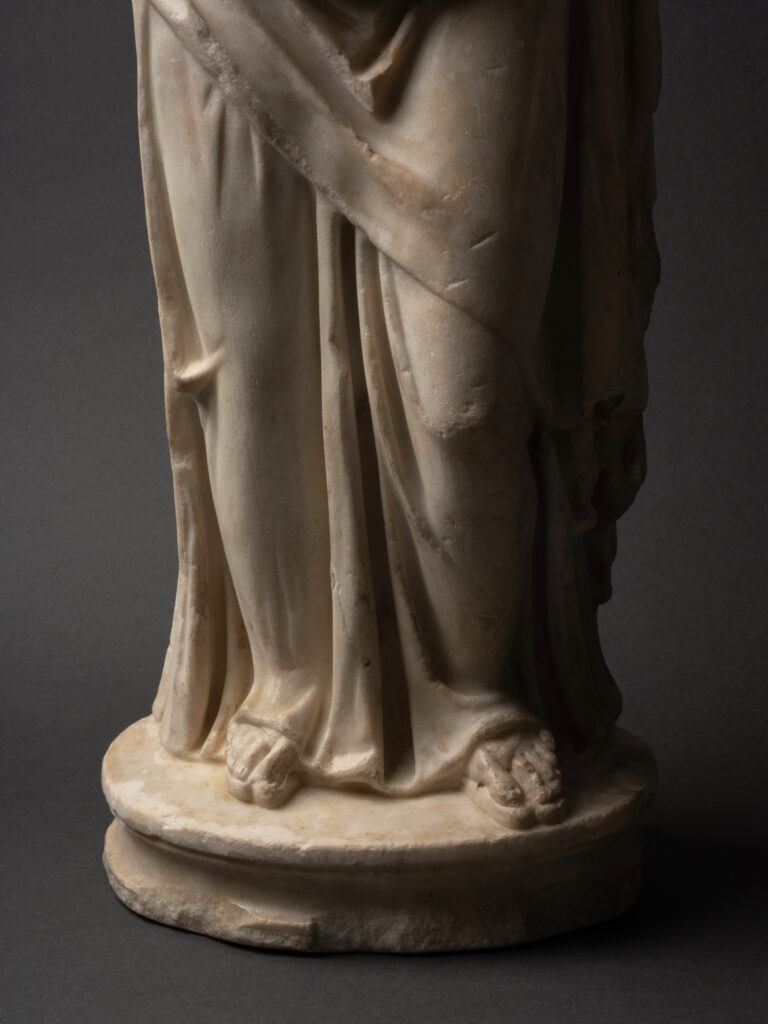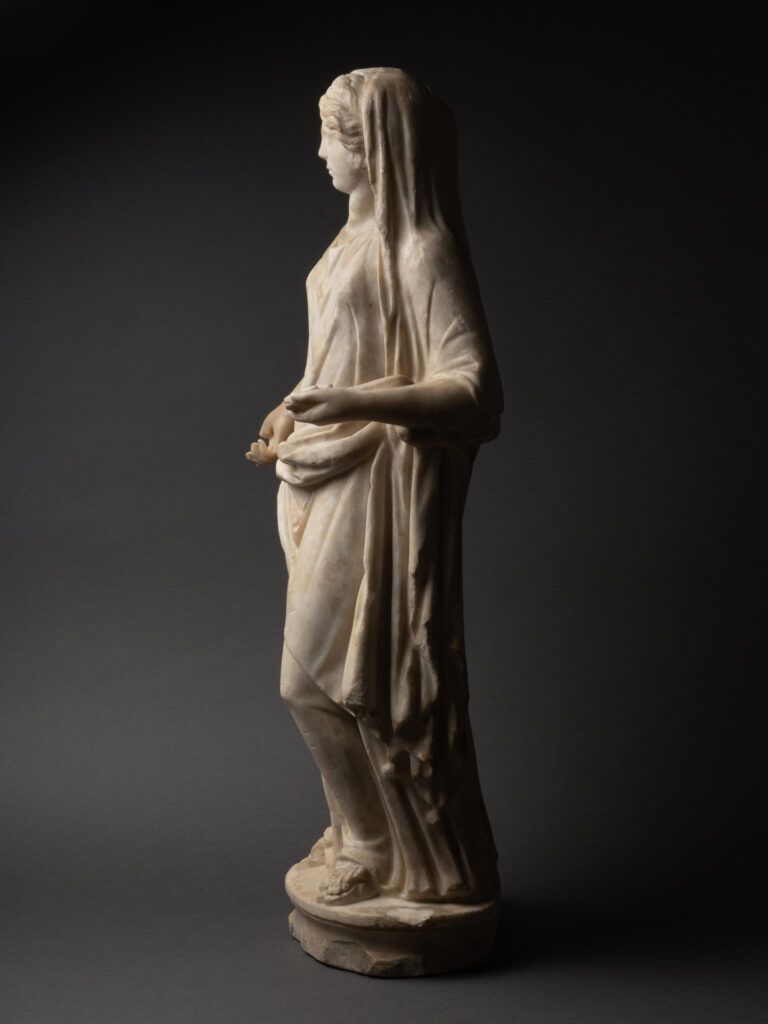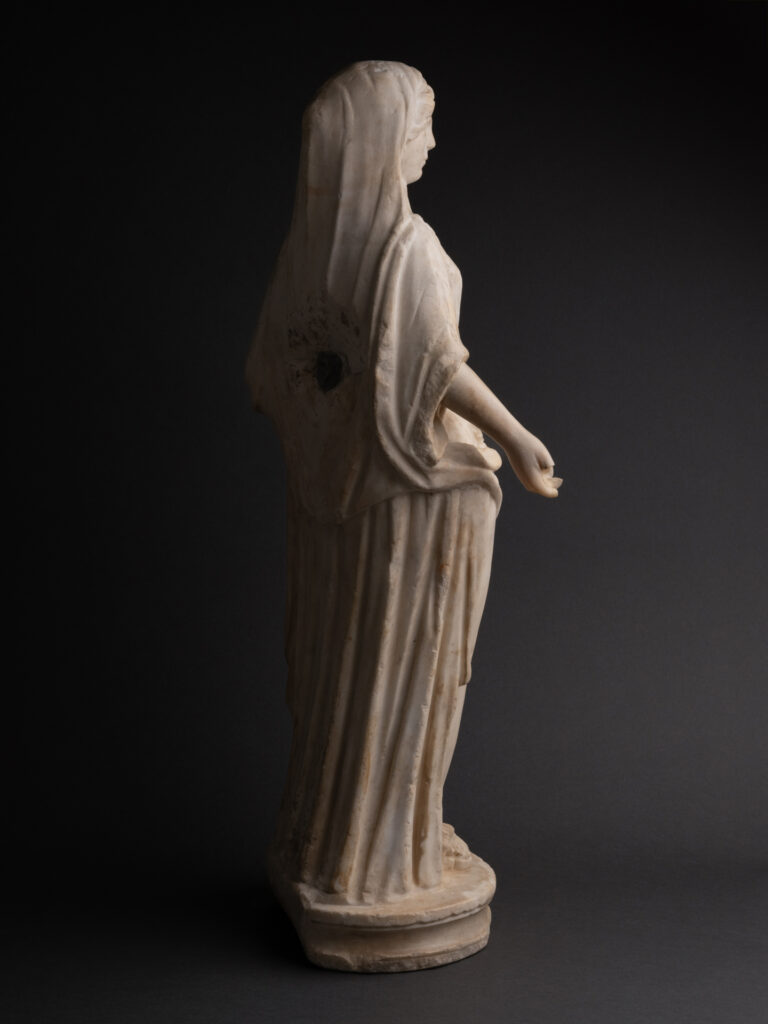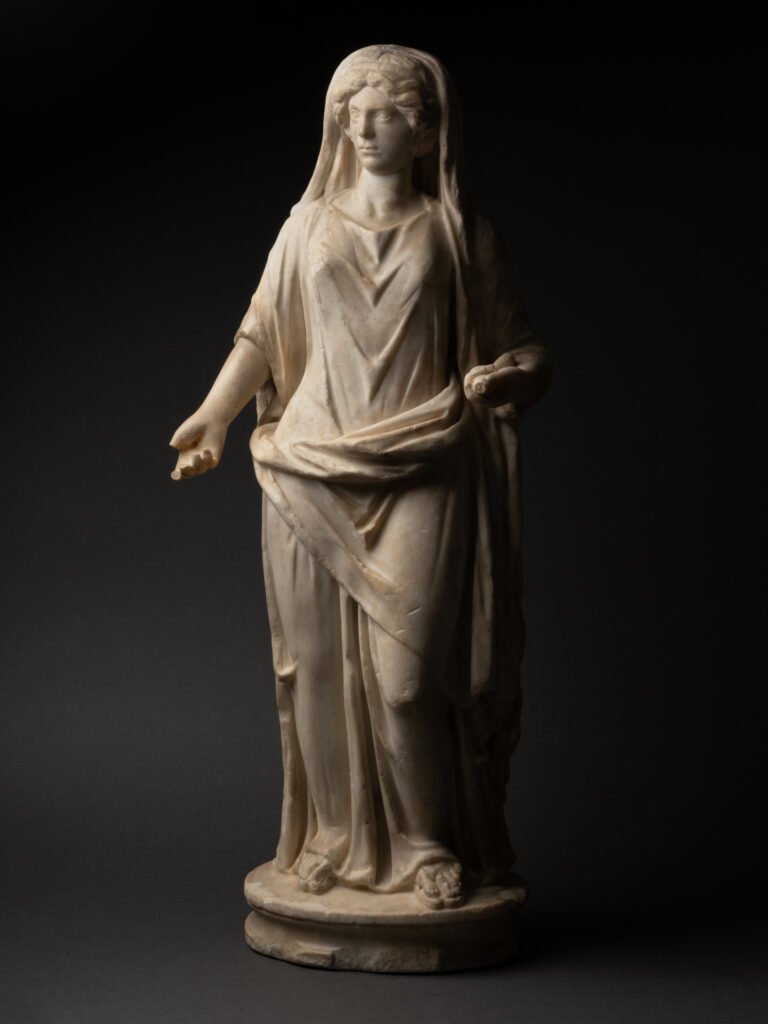This magnificent marble statue, dating from the 1st or 2nd century AD, has all the characteristics and attributes of the goddess Hygie. The goddess wears a thin veil over the top of her head, subtly covering her hair while clearly exposing her face. Her head is delicately turned to the left. Her features are serious, firm yet finely sculpted. Her almond-shaped eyes rest on a distant point. Her slim nose is straight, her lips are pursed and her youthful face exudes softness.
Her hair, which we can only guess is long, is coifed, tied and held back by a headband. This headdress is often found in depictions of goddesses or vestals. Her clothing is carefully rendered: she wears a long, sleeved tunic and a cloak tied around her waist, whose serpentine contortions recall the presence of the reptile in her left hand. The drapery, appearing wet, molds and sculpts her body. Shown in a slight contrapposto, the goddess rests on a sculpted base. The female figure is identified with the goddess Hygie by the snake coiling in her right hand.
In Greek mythology, Hygie is the daughter of Asclepius, god of medicine, and Epione, goddess of health, associated with cleanliness and hygiene. Among the Romans, the goddess was identified in different ways: first, she was identified with Valetudo, personal goddess of health and daughter of Aesculapius (the Roman name for Asclepius), then, around the 1st century BC, she was assimilated with Salus, one of the oldest goddesses in the Roman pantheon. In Roman worship, Salus was associated with Fortuna (Fortune) and Spes (Hope), then with Apollo and Aesculapius in sacrificial rites (Titus Livius, XL, 37).
Representations of Hygie and Salus are fairly stereotyped. For Hygie, she is always shown as a young woman accompanied by a snake, often long, wrapped around her body and drinking from a cup. Salus is initially shown seated on a throne, also accompanied by a snake, which she feeds with a patera. Later, she is shown standing, still feeding the reptile. In the case of our statue, it’s possible that a cup was in her right hand, being difficult to dissociate from the snake.
The snake, associated both with Asclepius (Aesculapius) in his famous staff and with Hygie, refers to beneficial and healing forces, its molting being a symbol of permanent rebirth (Marie Nonclercq, 2016). These attributes can be found in several statues depicting the goddess, such as the Hygie from the Roman villa at Chiragan, where the longer snake wraps itself around the goddess. Or in the statue of Salus in the Columbia Museum, where the snake rests on the palm of the figure’s hand.
The statue of Hygie-Salus presented here is a perfect example of reproductions, iconographic transmissions, and certainly of worship, between ancient Greece and Rome. Of great stylistic and technical quality, it could be a miniature reproduction of a large temple statue.
